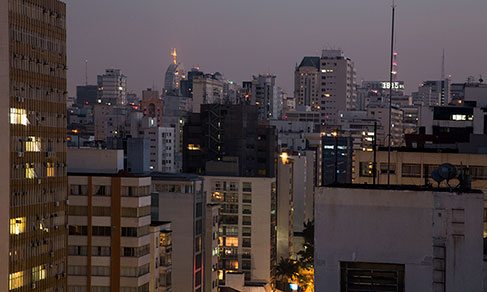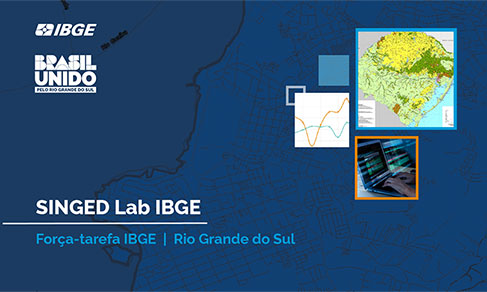Covid-19 Dashboard
IBGE launches interactive dashboard to help municipalities fight the pandemic
September 21, 2020 10h00 AM | Last Updated: October 14, 2020 02h57 PM
Highlights
- Covid-19 Dashboard by Municipality groups 24 indicators for the planning of support actions against the pandemic.
- Data is subdivided into three categories: vulnerable population (2010 and 2019), health system responsiveness (2019) and pandemic monitoring (2020).
- The dashboard encompasses information from the IBGE, the Ministry of Health and Fiocruz/Brasil.IO for the 5,570 municipalities in the country.
The IBGE launches today (21) the Covid-19 Dashboard by Municipality, with interactive maps that enable users to select a locality and have an overall view of 24 indicators for the planning of actions against the pandemic in all the 5,570 municipalities in the country. The dashboard is available at covid19.ibge.gov.br.
The data are subdivided into categories: vulnerable population, health system responsiveness and pandemic monitoring and can be downloaded as kml, shp and csv files. The dashboard encompasses information from IBGE surveys and from the National Register of Health Facilities (CNES), of the Ministry of Health and Fiocruz/Brasil.IO.
“The idea is to give society access to a group of information about their municipalities and their status in comparison with others. The dashboard presents many pandemic-related indicators in one same environment, with easy-to-reach information on the map, which allows users to compare data from their own and other Federation Units in an interactive way,” Claudio Stenner, IBGE's Geography and Environment Coordinator says.
“City managers, and I mean from 5,570 municipalities, now have a tool to help them find all the information they need in one single platform, without the need of several different products,” Rafael March, Geomatics Coordinator at the IBGE, adds.
See the categories and the 24 indicators
Vulnerable population (2010 and 2019): Indigenous people (2010), population aged 60 and over (2010), population by age bracket (2010), housing units with three or more residents per room (2010), population (2010), Indigenous localities (2019), quilombola localities (2019), housing units in subnormal agglomerates (2019) and population (2019).
Health system responsiveness (2019): nurses, nurses working for SUS, health establishments with In-patient hospital care and same-day hospital care beds, primary care health establishments, ICU beds, ICU beds at SUS hospitals, hospital beds, beds at SUS hospitals, physicians, physicians working for SUS, ventilators and ventilators at SUS hospitals.
Pandemic monitoring (2020): cumulative cases, cases in the last week and new cases per day.
“Each category has several indicators below the map and presents information from all the sources,” Aline Lopes Coelho, manager of Integrated Geoinformation Production, explains.
For each selected indicator, the user can see not only the status of the selected municipality, but also that from other municipalities around it. Information changes as a new municipality is typed in the search field or by a click on the map. These features make the dashboard very dynamic and allow users to see comparable results. The platform also shows, for each indicator, reference figures that enable the contextualization of municipal data in comparison with data from the respective Federation Unit.

Health Areas
The interactive maps also show health areas identified by the survey Areas of Influence of Cities, which gather municipalities by main place for the provision of low and medium-complexity health services. The visualization of those overlapped areas enrichens the analysis, and provides the user with information on indicators from other municipalities that have a dependency relationship with the selected one, with regard to health-related services.
“Some municipalities are surrounded by a border, forming a region where people usually go to reach the same municipalities in search of heath assistance. For example, it is not enough that Niterói (RJ) be in good conditions, if São Gonçalo (RJ) or Rio de Janeiro (RJ) are not. Regarding decisions of the flexibilization of social distancing, for example, it is advisable that municipalities of one same area see data of one another,” Maurício Gonçalves e Silva, Integrated Geoinformation Production analyst at the IBGE, explains.




















